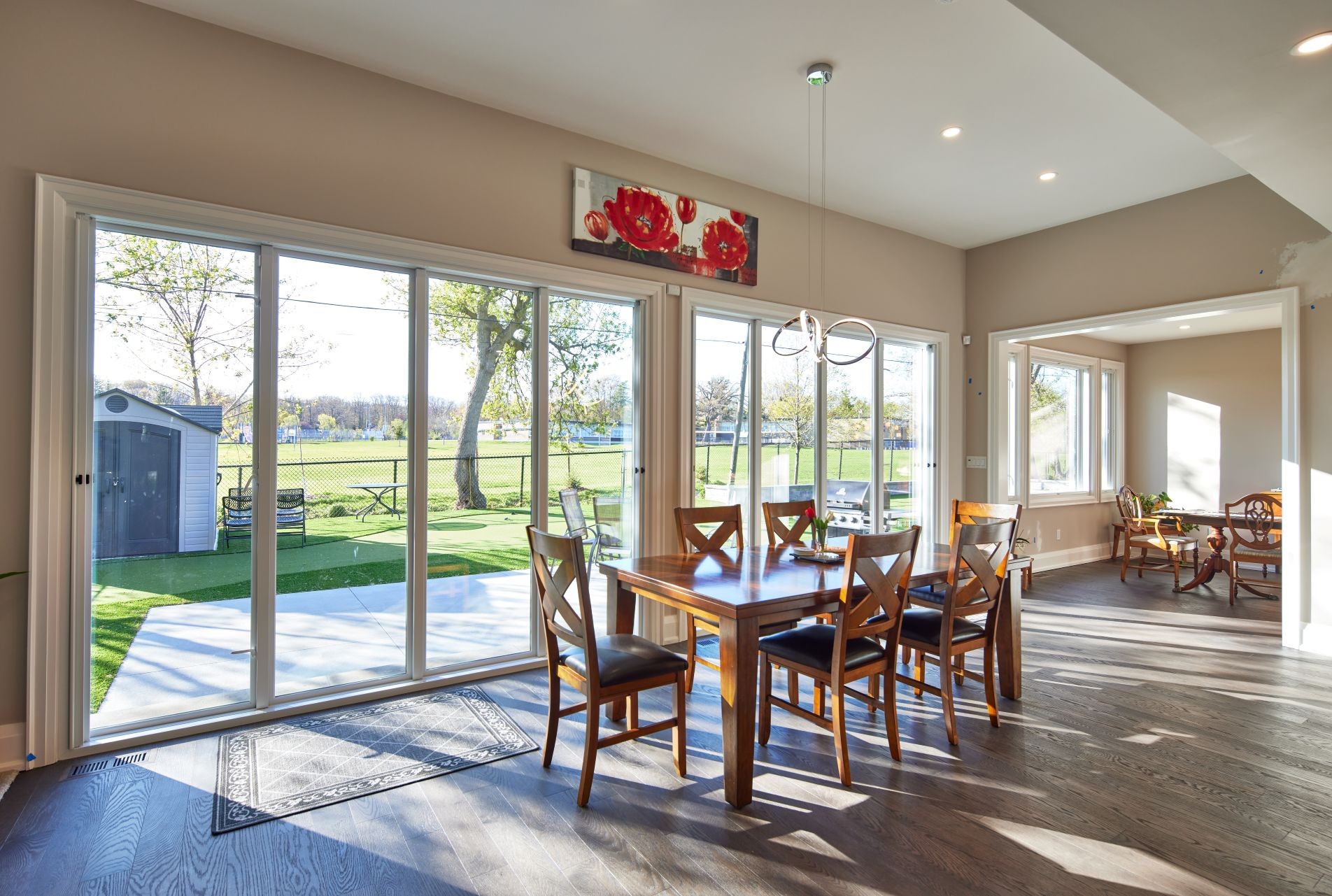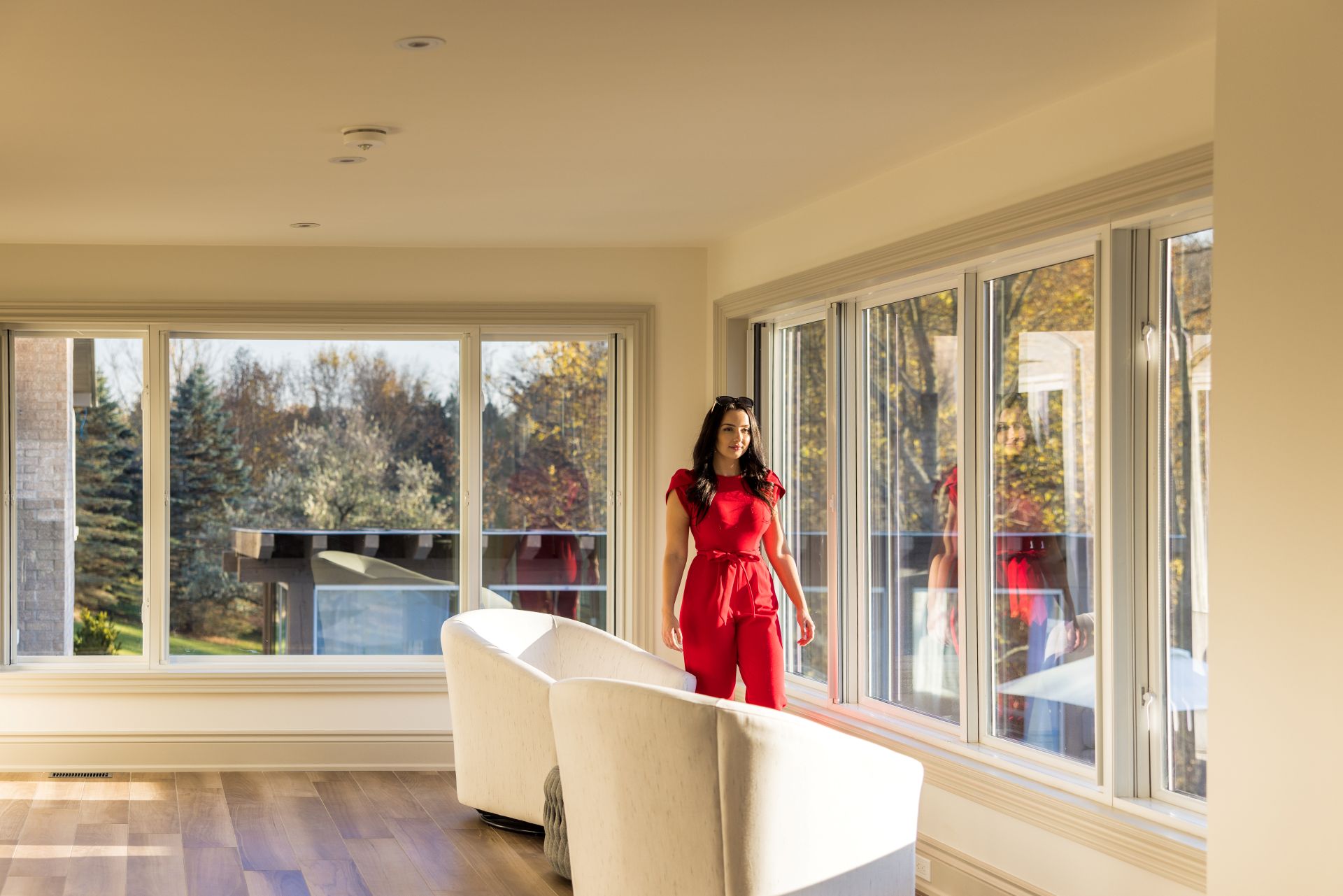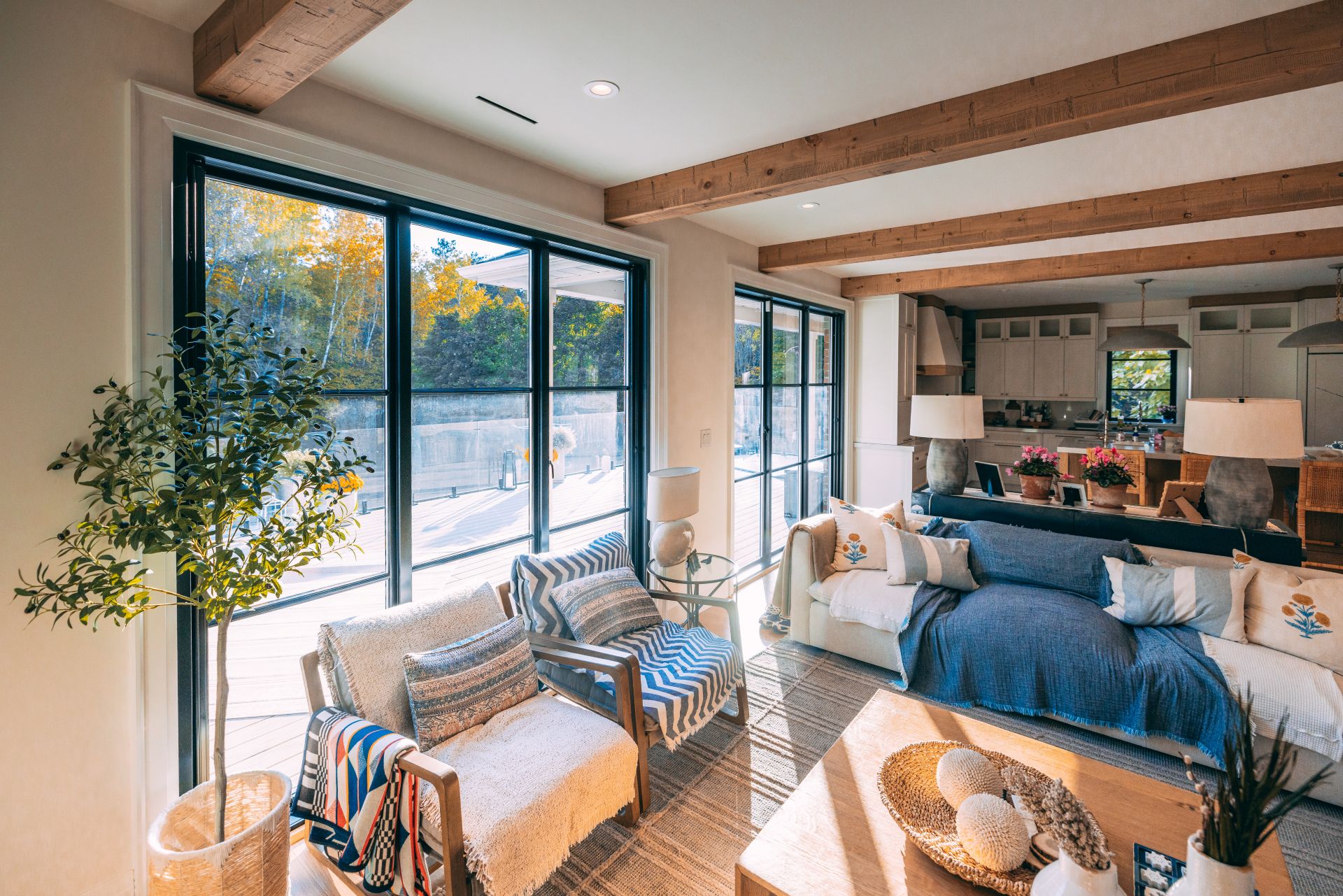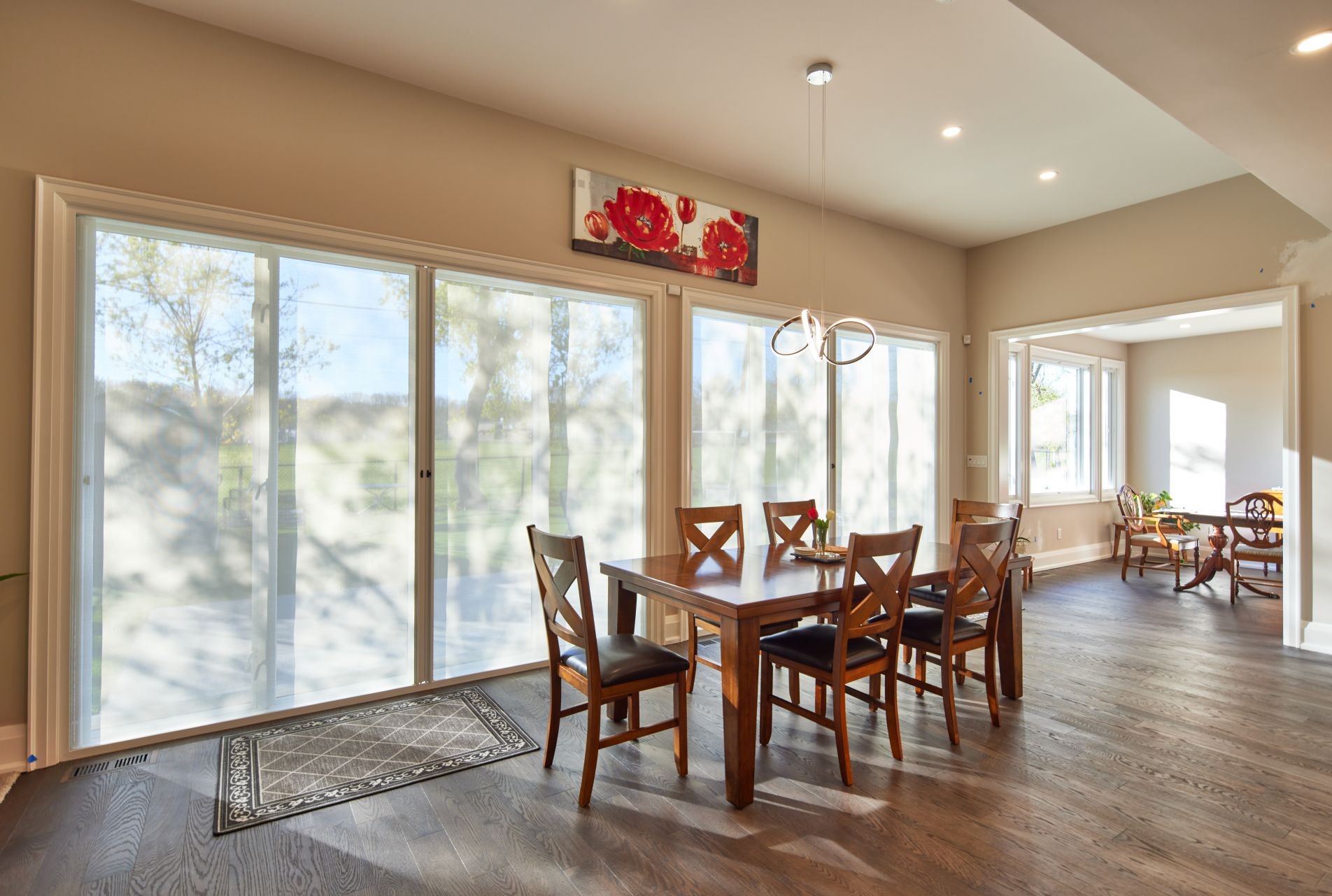
Energy Efficient Windows
Can You Tan Through a Window? Here's What You Need to Know!
While sunlight is essential for mood, warmth, and vitamin D, it also carries invisible ultraviolet (UV) rays. These can damage your skin, even indoors. However, not all UV rays have the same impact on the skin. Some cause tanning, others lead to sunburn, and some can even accelerate aging or trigger cancer.
With modern lifestyles placing us near windows, in cars, or behind glass walls for hours a day, it's more important than ever to understand how UV light works and how it can affect your health through glass.
So, can you tan through a window? This article breaks down the science of UV rays, the truth about tanning through glass, and how to protect your skin without sacrificing natural light in your home.
Key Takeaways
- Not all UV rays are the same. UVA rays penetrate deep into the skin and cause long-term damage like aging and melanoma. UVB rays affect the skin’s surface. They cause sunburn and trigger vitamin D production. UVC rays are blocked by the ozone layer and don’t reach the ground.
- You can tan through a window, but it's not safe. Standard glass blocks most UVB rays (so no vitamin D or sunburn), but harmful UVA rays still pass through. This can lead to gradual tanning, premature skin aging, and increased cancer risk.
- Tanning is a sign of skin damage, not health, whether from natural sun or tanning beds. Tanning results from UV-induced stress on the skin, so no tan is truly "safe."
- Magic windows and glass doors offer a safer way to enjoy sunlight indoors. With low-E coatings, advanced UV-blocking glass, and protective window treatments, Magic products allow natural light in while filtering out up to 97% of harmful UV rays, protecting both your skin and your home's interior.
Types of UV Rays
UV light has a shorter wavelength than visible light, and it is invisible to the human eye. The sun emits three forms of UV light:
- UVA rays: they have a longer wavelength and penetrate deeper into the skin, reaching the dermis. They are more likely to cause malignant tumors. They can also cause skin aging and eye damage.
- UVB rays: they penetrate only to the top layer of skin. These are the rays responsible for tanning, sunburn, and some forms of skin cancer. UVB rays also damage collagen fibers, accelerating skin aging. UVB rays can directly affect the DNA.
- UVC rays: they do not reach the Earth’s surface.
Here's a breakdown with the most important details you need to know:
How Does Tanning Work?

Tanning is the skin’s natural defense mechanism against UV damage. It involves two primary processes, depending on the type of UV exposure:
- Melanin and skin pigmentation: UVB rays stimulate melanocytes. These are cells located in the epidermis. Melanocytes produce melanin, a pigment that leads to deeper, longer-lasting tan that develops over the day. UVA sun rays, on the other hand, are harmful rays that cause oxidation of existing melanin. This leads to an immediate but temporary sun tan (often visible within hours).
- Fitzpatrick skin types: skin response to tanning and burning varies by Fitzpatrick skin type. They range from Type I (very fair) to Type VI (very dark). Lighter skin types are more prone to burning and skin damage. Darker skin types have more natural melanin protection but are not immune to UV-related risks.
Ultimately, keep in mind that both UVA and UVB rays can damage the skin and lead to cancer, according to the American Cancer Society.
Can You Tan Through Glass Windows?
The short answer is yes, you can tan through a window. However, most glass windows block almost all UV rays.
Standard glass blocks almost all UVB rays but only half of UVA rays. The amount of UV rays that penetrate through a glass sheet depends on the glass thickness, type of glass, and coatings. For instance, double-glazed windows and laminated glass offer better protection by reducing UV transmission.
Below, you'll find more details about different types of windows and the amount of UV protection they offer.
Standard Glass
- Standard glass blocks nearly 100% of UVB rays but allows up to 74.3% of UVA rays to pass through.
- You may tan gradually through a window, but you won't get sunburn or synthesize vitamin D.
Car Windows
- Windshields typically consist of laminated glass for safety reasons. This means they block up to 96% of UVA rays and nearly all UVB rays, offering decent protection.
- Rear and side windows often allow more UVA to pass through. They block only approximately 71% of UVA rays, unless treated or tinted.
- Prolonged exposure during long car journeys can lead to tanning and photoaging on the driver's side of the body. Research even shows that skin cancers are more prevalent on the left side of the body, which may be linked to car windows.
Double-Glazed Windows
- Double-glazed windows are designed for insulation. They also provide better UV protection.
- Low-E coatings can further reduce UVA transmission.
- Still, some UVA can get through, so sunscreen may be warranted indoors if you're frequently by a sunny window.
Laminated Windows
- Laminated windows consist of two glass layers separated by a plastic interlayer, which blocks up to 99% of UVA and UVB radiation.
- Laminated glass is the best option for indoor spaces to prevent fading, tanning, and skin damage.
Can You Get Vitamin D Through a Window?

You cannot absorb vitamin D through glass.
Vitamin D has a myriad of health benefits, especially for bones, immune function, and overall well-being. The body synthesizes it when UVB rays hit the skin. Glass blocks UVB rays, which means your skin cannot produce vitamin D indoors, even if you're sitting in direct sunlight.
To maintain healthy vitamin D levels, consider the following:
- Spend time outdoors, ideally 10–30 minutes of midday sun exposure (varies by skin tone and latitude).
- Eat vitamin D-rich foods: fatty fish, fortified dairy products, and egg yolks.
- Take supplements if you have limited sun exposure or live in high-latitude regions.
Reminder: short, unprotected exposure is enough for vitamin D; prolonged unprotected exposure still increases cancer risk.
Health Implications of Indoor UV Exposure
It’s true that being indoors significantly reduces UV exposure. But it does not eliminate the risk, particularly from UVA radiation, which penetrates standard glass.
Here's why indoor UV exposure is still risky:
- UVA rays, which account for the majority of ultraviolet radiation reaching Earth, can pass through untreated window glass, including most home, office, and car windows.
- Prolonged exposure to UVA through windows can lead to:
- Photoaging (wrinkles, sagging, pigmentation)
- DNA damage over time
- Increased risk of skin cancer, especially in areas frequently exposed (like the face, arms, and hands)
- Unlike UVB, UVA doesn't cause your skin to get sun burnt, so you may not realize your skin is being damaged until long-term effects appear.
Here's who is at a higher risk:
- People working near large windows or in sunlit office spaces
- Drivers and frequent commuters, especially on the side facing the window
- Children and the elderly, whose skin may be more sensitive
- Anyone spending long hours by windows at home, especially in sunrooms or patio areas
Protecting Your Skin Near Windows

Protecting your skin from UV exposure is essential, even when indoors. Here are some measures you can take to prevent skin damage:
- Apply sunscreen if you spend significant time near bright windows.
- Regularly reapply sunscreen, especially if you are sweating or engaging in activities that may remove the protective layer.
- Wear long-sleeved shirts.
- Wear long pants.
- Wear tightly woven clothing.
- Use accessories like wide-brimmed hats to protect vulnerable areas such as the ears and neck from excessive sun exposure.
Why Magic Windows and Glass Doors Are a Smart Choice for UV Protection
Bringing natural light into your home enhances comfort, mood, and even energy efficiency. But it shouldn't come at the cost of your skin health or the fading of interior furnishings. Magic offers the perfect solution that balances sunlight exposure with ultraviolet light protection, and here's why:
- Magic windows, glass doors, and window walls are equipped with Low-E coatings and advanced glazing technology. They allow abundant natural light to flood your home while blocking up to 97% of harmful UV rays. This minimizes the risk of UV-induced skin damage and photoaging, even during extended periods spent near windows.
- UV rays can fade and degrade materials like wood, fabric, and artwork. Magic products help protect furniture, flooring, and decor from discoloration and wear.
- Low-E coatings reflect infrared light, helping keep indoor temperatures stable. This reduces heat gain in summer and heat loss in winter, cutting down on energy bills.
- Many Magic windows are made with laminated or tempered glass, increasing safety while maintaining visual clarity and UV protection.
- A bonus: Magic solar shades and thermal blinds can further reduce the transmission of harmful UV rays.

Tanning Myths Debunked
There are many tan-related misconceptions that can lead to long-term harm. Here are some of the most persistent myths:
- Myth: A base tan protects you from sunburn. Fact: A base tan offers minimal protection (~SPF 3) and still damages your skin.
- Myth: You can’t get sun damage on a cloudy day. Fact: Up to 80% of UV rays penetrate clouds, so you should wear sunscreen regardless of cloud cover.
- Myth: Tanning beds are safer than the sun. Fact: Tanning beds can emit up to 12 times more UVA than the sun—increasing melanoma risk significantly.
- Myth: Dark-skinned people don’t need sun protection. Fact: While darker skin has more melanin, it can still burn and develop skin cancer.
- Myth: Sunscreen prevents you from tanning. Fact: Sunscreen slows tanning by filtering harmful UV, but you can still tan with regular use.
- Myth: After-sun products can reverse sunburn damage. Fact: They only soothe the skin and do not repair the underlying damage.
Final Thoughts
In summary, you can definitely tan through a window. However, UV exposure through windows can sometimes even lead to long-term damage like skin aging and cancer. While glass windows filter out most UVB rays, they do not block UVA light completely, which can still penetrate and cause harm. Therefore, protecting your skin indoors is as important as when you are outdoors.
Remember that your skin health is paramount. Stay safe, stay informed, and take care of your skin by installing high-performing windows that protect your skin against UV damage!
Frequently Asked Questions
How long does it take to get a tan through a window?
It can take several hours of consistent exposure over multiple days to get a suntan through a window. Only UVA rays penetrate standard glass, and they cause gradual pigmentation.
Can you get vitamin D through a window?
No, you cannot get vitamin D through a window, because UVB rays, which are essential for vitamin D synthesis, are blocked by glass.
Can you get sun exposure through a window?
Yes, you can get sun exposure through a window. UVA rays pass through regular glass. This means you are still exposed to sunlight that can cause skin aging and long-term damage, even indoors. However, installing double- or triple-glazed windows with low-E coatings and window treatments can reduce sun exposure.
Do you get sunburn through a window?
It is unlikely to get sunburn through a window. Sunburn is caused by UVB rays, which are blocked by most windows. However, your skin can still get damaged because of the UVA rays that do pass through a window.
Can you tan when not in direct sunlight?
Yes, you can tan when not in direct sunlight. Indirect or diffused sunlight can still cause tanning over time, especially when UVA rays bounce off certain surfaces like water, sand, or concrete.
Can you get a tan through a window?
Yes, you can get a tan through a window, but the tanning effect will be significantly reduced because glass filters out most UVB rays while allowing only some UVA rays to penetrate.
Should you wear sunscreen indoors?
Yes, wearing sun screen indoors is advisable, especially if you spend considerable time near windows, as UVA rays can still penetrate glass and harm your skin.